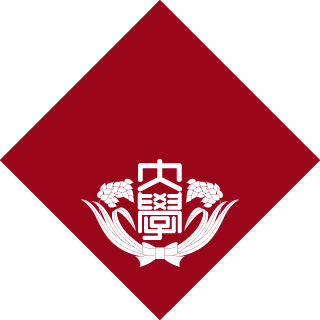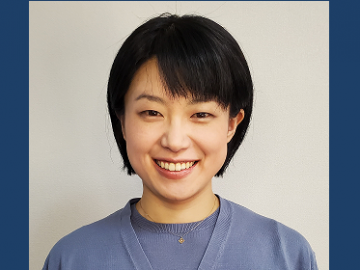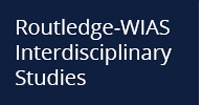AKIYAMA Tetsu, Associate Professor
Unveiling hidden contexts of modern Central Asia by focusing on “historical practice”
I have been studying the modern history of Central Asia from the “historical practice” approach. In “historical practice,” people living in the present time position themselves in some past time, and look at the present and the future through the lens of various historical events. I focus on Kyrgyz tribal chieftains and comprehensively examine their historical practice over time, looking at not only political history but also social, cultural and religious aspects. For some time, studies of educated, so-called modern intellectuals (intelligentsia) were the dominant source of images of the modern history of Central Asia, while so-called “traditional” societies and their leaders (tribal chieftains) received less research attention, and many aspects remain unexplained. For that reason, I chose Kyrgyz as a research subject, since it retains to this day “traditional” elements.
Specifically, over about a century and a half, from the era of Russian dominance through the Soviet period, I trace the history of a Kyrgyz chieftain family, including Shabdan Jantay (ca.1839–1912) to his great-grandchildren, who live in the present time. I draw on archive documents, conduct interviews, and analyze the evaluation of those individuals through the evidence in materials such as newspapers, movies, plays, and biographies.
My research consists of three parts. The first part is the biography of Shabdan, published in 2016 as a monograph in Japanese. Parts two and three of this research are ongoing (see Fig. 1).

Figure 1. History of Shabdan family from the mid-19th to the present day
Clan survival strategies
In the history of Central Asia, nomads based in the steppe region long held hegemony over the sedentary population of the surrounding region, peaking in the Mongol Empire (13th and 14th centuries). The settler communities gradually grew relatively strong, and by the middle of the 19th century, most of Central Asia was incorporated into the Russian Empire (the eastern part was taken by the Qing Dynasty).
Before the Russian Empire conquered Central Asia, Shabdan’s father, Jantay, sent his son Shabdan to serve in the court of the Kokand Khanate. The Russian Empire conquered Central Asia by forming allegiances with the local forces and their leaders (the nomadic chieftains) and taking them on as “collaborators.” A case in point: the Russian Empire courted Jantay, who had a close relationship with the Kokand Khanate, and attempted to co-opt him. Jantay realized that a military clash with the Russian forces would lead to his people’s destruction, so he chose to “collaborate” with the Russian Empire. However, he did not become a simple minion: he made contact with various people and groups, including the Kokand Khanate, to build connections and gather extensive information. Then, thanks to the information he had collected, Jantay emerged as a successful negotiator and an intermediary.
Although the Russian Empire brought Jantay’s clan to its side, they continued to harbor suspicions, because the clan was originally a powerful element of the Kokand Khanate. However, the Russians valued Jantay’s connections and the information he acquired through his connections, so they did not exclude the clan, even after they conquered Central Asia in the late 19th century. Instead, the Russians highly valued their military service in support of Russia’s conquest, and appointed Jantay’s son Shabdan lieutenant colonel in the Russian Army. After the end of the 19th century, however, influential local figures, including Shabdan, came to be seen as an obstacle to Russian rule.
In my study of the modern history of Central Asia, when I look at materials from the Russian Empire, which ruled the nomads, I often find stereotypical images of nomads, showing them as warlike and militant. However, looking at the history of the Shabdan clan with the approach I have described above, it is clear that the clan were not just brave warriors on horseback, but also strategists who were keenly aware of the importance of information and of connections for obtaining such information, and made great efforts to acquire them. Also, in relation to Russia, their attitude was, so to speak, “feigned obedience,” and they used “collaboration” and “resistance” as distinct means of achieving their purposes. In general, not just in the case of Russia, when an empire tries to expand its sphere of influence to different ethnic areas and tries to rule them, it is necessary to obtain the “collaboration” of the local leaders. Through my examination of the trajectory of the Shabdan clan, I believe I was able to accurately depict the mobility of such local “collaborators” and the struggles they faced when they encountered imperial power in a more concrete form.
Present and future research
In the second part of this project, I am tracing the history of Shabdan’s clan in the Soviet period. The Soviet version holds that the descendants of Shabdan were excluded when Stalin came into power, but materials released after the dissolution of the Soviet regime in 1991 tell a different story. The Soviet regime tried to get Shabdan’s offspring out of the way by exiling them, but they used the connections they had cultivated with high-ranking Soviet officials to stall that action, and the lineage has managed to survive to this day. I am very interested in the conflicts and struggles between the Soviet regime and the descendants of Shabdan. Based on the primary materials collected in Central Asia and Moscow, I am now in the process of writing another monograph.
The third part of this project is the life history of Shabdan’s great-granddaughter, which covers the period from the perestroika and the collapse of Soviet regime to the present day. I have conducted several interviews of her, originally a scientific engineer and the current representative of the clan. Since the dissolution of the Soviet regime, she has written a biography of Shabdan, has had a statue of him erected, and also been involved in filmmaking. Through exploring the “historical practice” of how the descendants of Shabdan, including the great-granddaughter, living in the present, face the past and how they understand and express it, I aim to reconsider the modern history of Central Asia.
Interview and composition:
Keiko AIMONO
In cooperation with:
Waseda University Graduate School of Political Science J-School










